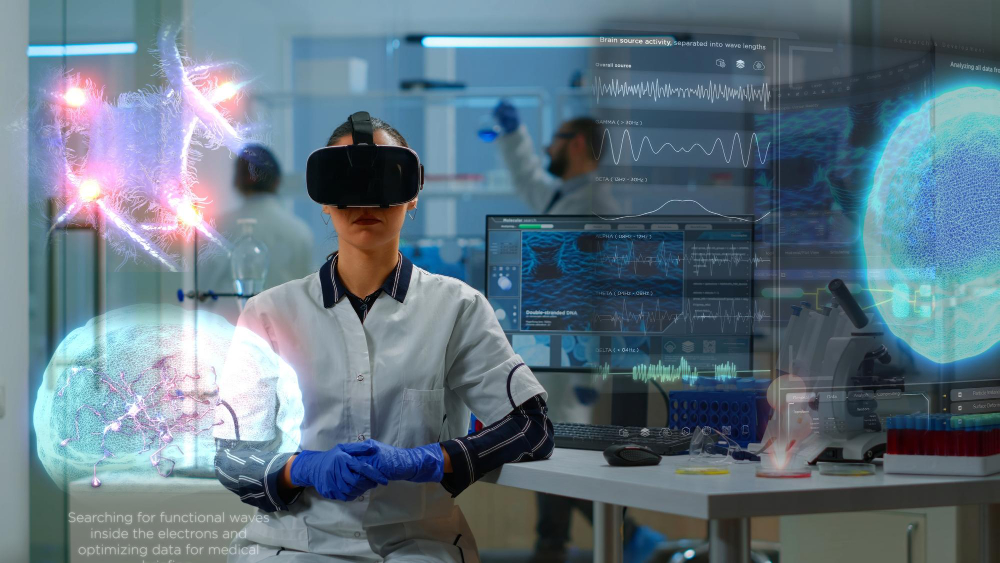AR Phantom Limb Pain Treatment: For amputees grappling with phantom limb pain, AR offers a glimmer of hope. Through interactive simulations, patients can visualize and control virtual limbs, paving the path for therapeutic interventions.
Accuvein: Revolutionizing Vein Visualization: Accuvein’s handheld scanner, powered by AR, revolutionizes vein visualization. By overlaying digital maps onto the patient’s skin, healthcare professionals can locate veins with unprecedented accuracy, streamlining procedures and enhancing patient comfort.
VR Exposure Therapy: Confronting phobias head-on, VR exposure therapy immerses patients in simulated environments, gradually desensitizing them to triggers. From claustrophobia to acrophobia, VR therapy offers a safe and controlled environment for overcoming fears.
AR-Based Patient Care: Harnessing the power of AR, healthcare providers gain real-time access to patient data and clinical information. Google Glass, for instance, overlays electronic health records, empowering clinicians with actionable insights at the point of care.
AR-Based Autism Treatment: The Autism Glass Project exemplifies the transformative potential of AR in pediatric care. By deciphering emotional cues through AR, children with autism gain invaluable social skills, fostering meaningful connections with their peers.
Eye Decide AR App: Empowering patients with knowledge, the Eye Decide AR app offers interactive anatomical models and educational resources. From visualizing medical conditions to understanding treatment options, AR enhances patient engagement and informed decision-making.
VR Simulation Systems: From surgical training to rehabilitation, VR simulation systems offer immersive learning experiences. By replicating real-world scenarios, trainees hone their skills in a risk-free environment, fostering competence and confidence.
SimX: Advancing Medical Simulation with AR: SimX elevates medical simulation to unprecedented heights, offering customizable virtual patients and real-time feedback. From case building to performance monitoring, SimX revolutionizes medical training with its immersive AR platform.
MedicAR: Precision Guidance in Healthcare Procedures: Leveraging Google Glass and AR technology, MedicAR provides step-by-step guidance during medical procedures. With CT/MRI images superimposed over the patient’s skin, clinicians gain unparalleled precision and efficiency.
